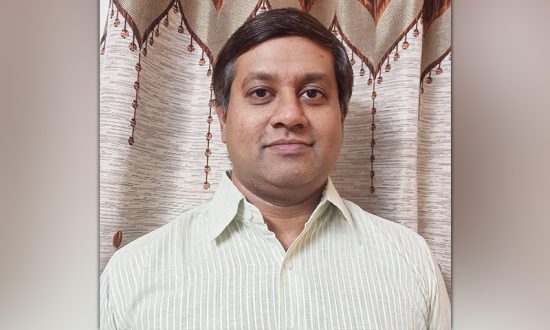Sanket Panchamia is a Lead Architect for Blockchain at Unisys and part of the Emerging Technologies BU. He has been with Unisys for 5+ years and has an overall experience of 12+ years in the IT industry. He leads the development and delivery of Blockchain solutions in Unisys. He dons multiple hats in Unisys along with his day job and is a Patent champion, Idea coach and Innovation Site Leader for Technology India wherein he is responsible for conducting hackathons for the organization. Sanket is also an avid reader and has been a speaker at multiple conferences.
Innovation is what sets companies apart in the highly competitive global markets that we operate in. Fostering innovation not only paves the way for businesses to gain competitive advantage but also allows them to increase their profit margins. Over the years, organizations have started realizing the importance of fueling innovation within and even outside their boundaries, to enable sustainable growth and success. In the age of crowdsourcing and open communities, it is imperative that organizations also step outside the boundaries of their R&D teams and open their doors to the wealth of innovative ideas and talent out there.
India is the 5th largest economy in the world, housing over 1.3 billion people, and 1.2 million businesses. It is also one of the largest exporters of talent[i]. According to a 2007 US survey, between the years 1995 and 2005, more companies were launched by ethnic Indians than by immigrants from Britain, China, Japan, and Taiwan combined[ii]. There is clearly no dearth of intellectual prowess or innovation in India. Equally remarkable is the fact that a lot of game changing innovation has come from the academia and student community. Be it the Intelligent Street Lights[iii] by the students of IIT Chennai or the Intelligent Goggles[iv] (G4B) for the blind developed by a school student Anang Tadar, the innovations by these young minds are surely proving to be a turning point. With the world at their fingertips, the academia is now a force to reckon, not just in terms of churning out great talent but also in terms of bringing innovative ideas to the forefront. A lot many start-ups owe their existence to projects that originated in the corridors of an academic institution. As entrepreneurship and innovation becomes core to the college experience, campuses are stepping up to empower their students in every way possible.
While the academia is able to equip the students with the resources they need to bring their ideas to life, a market perspective is often what the students lack. This is where the corporate world can play a part. Providing the students a perspective on real world problems and the practical constrains as they go about applying technology to solve these problems is critical to building the problem solving skills of students, and preparing them for the professional world, as entrepreneurs or otherwise. Students gain rich practical experience that the academic world may not always provide. Corporates also benefit from these engagements that expose them to the best talent in the industry as well as innovative ideas that they can monetize. In essence, the academia corporate partnerships are a win-win collaboration for all stakeholders.
Many organizations have come forward to organize technical project contests for young minds to participate in. For example, Unisys Cloud 20/20™ contest, launched in October 2009, is one of the biggest technical project contests of its kind in India, with close to 50,000 individual member registrations since 2009. Functioning as a premier confluence of industry and academia, the event brings the entire tech innovation fraternity under one roof, serving as a much-needed conduit to bridge the industry-academia gap.
Another challenge that often impedes innovation from the academic community is the lack of funding support, often forcing innovators in India to park their IP rights outside the country. India does not figure in the top 5 patent offices of the world where much smaller countries like Japan and South Korea shine[v]. Although India is a hub of immense economic activity, its efforts to boost R&D and innovation are lagging. This is also reflected in the patenting activity in the country. Here again, corporates can join hands with academia and create win-win situations. Corporates can fund projects relevant to their area of business and the academic community can bring in their top talent to the equation, resulting in mutually beneficial outcomes.
Providing new information and skills as well as building the ability to understand and implement new technologies are a few critical areas that universities can help the students with to foster their innovative talent. On the other hand, corporates can help provide a platform to these students to showcase their skills and bring their ideas to life, besides funding relevant projects. The bottom line is that when academia and the corporates to come together and harness their collective abilities towards common objectives, everyone benefits.
[i] https://www.fastscience.tv/insights/india-innovation-patents/
[ii] https://www.fastscience.tv/insights/india-innovation-patents/
[iii] Intelligent Street Lights
[iv] Intelligent Goggles for the blind
[v] https://www.fastscience.tv/insights/india-innovation-patents/




